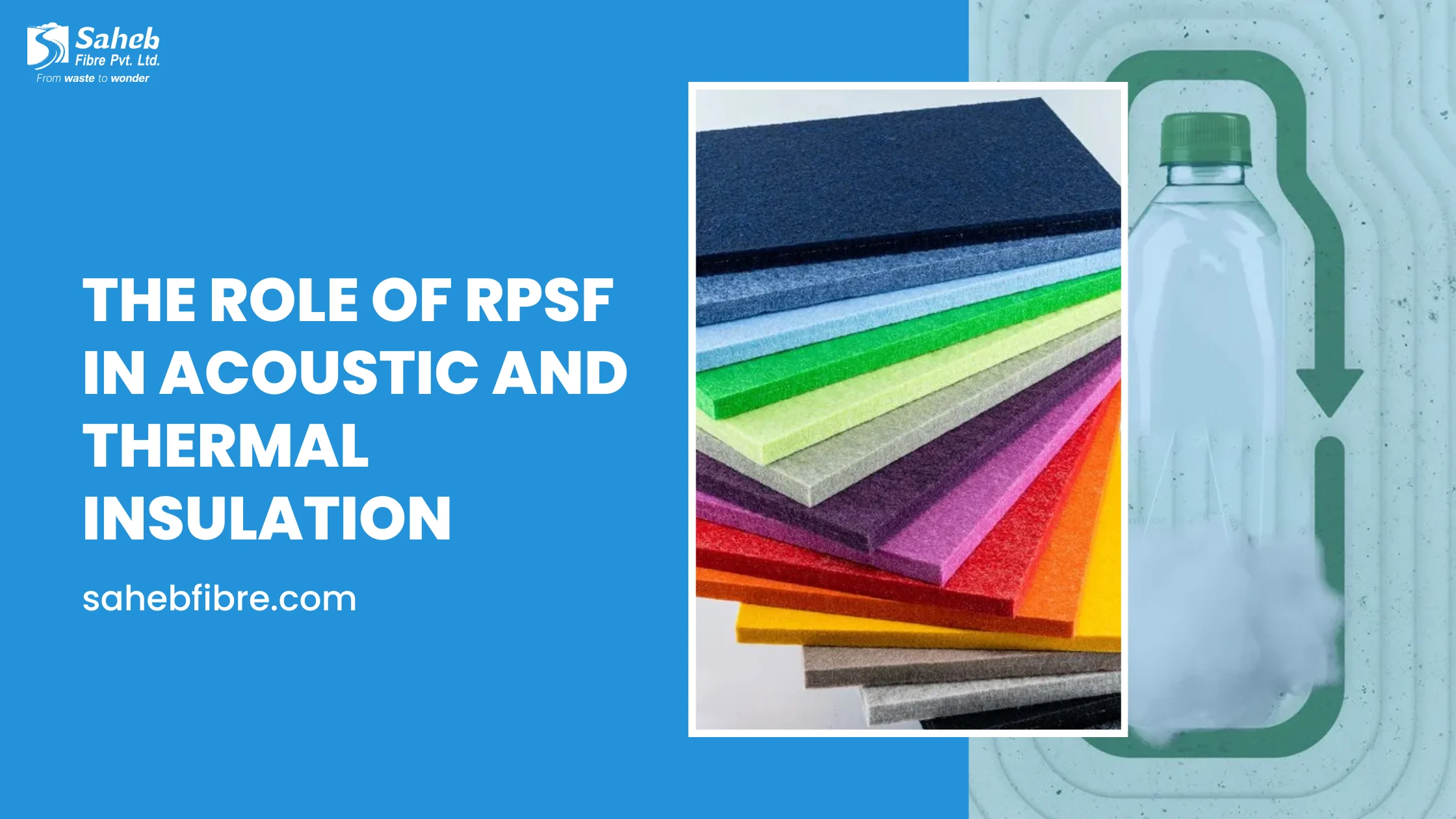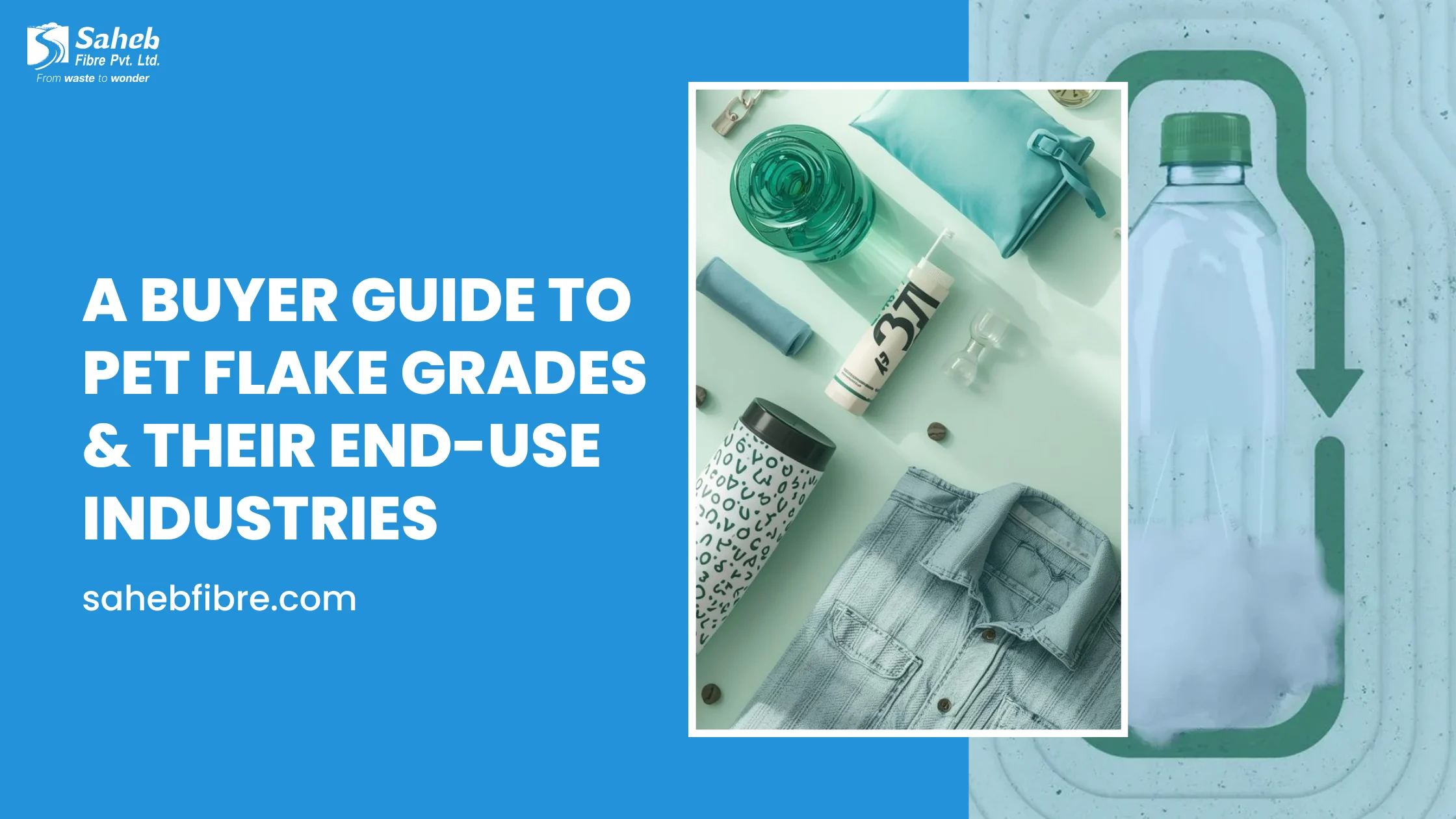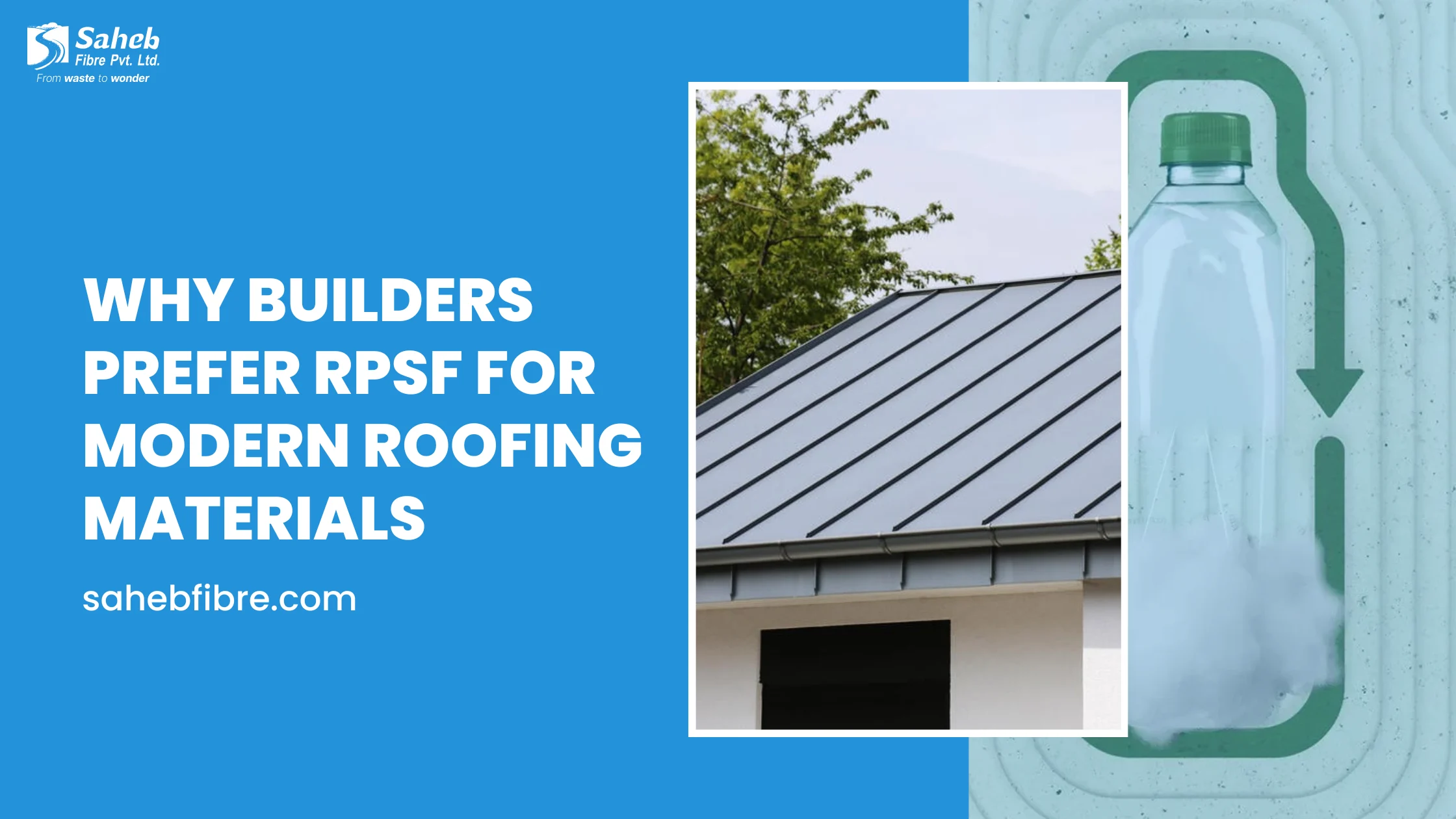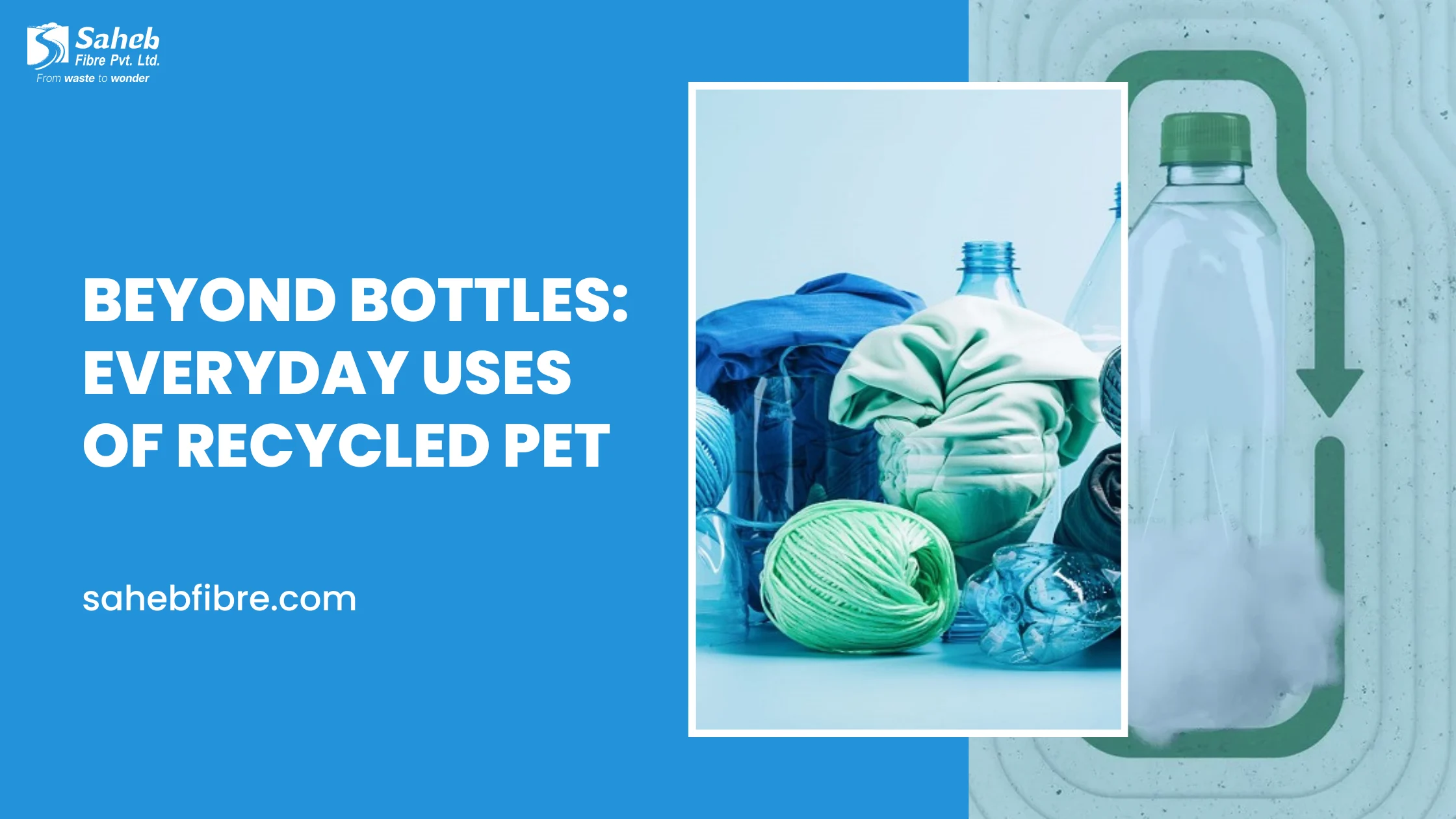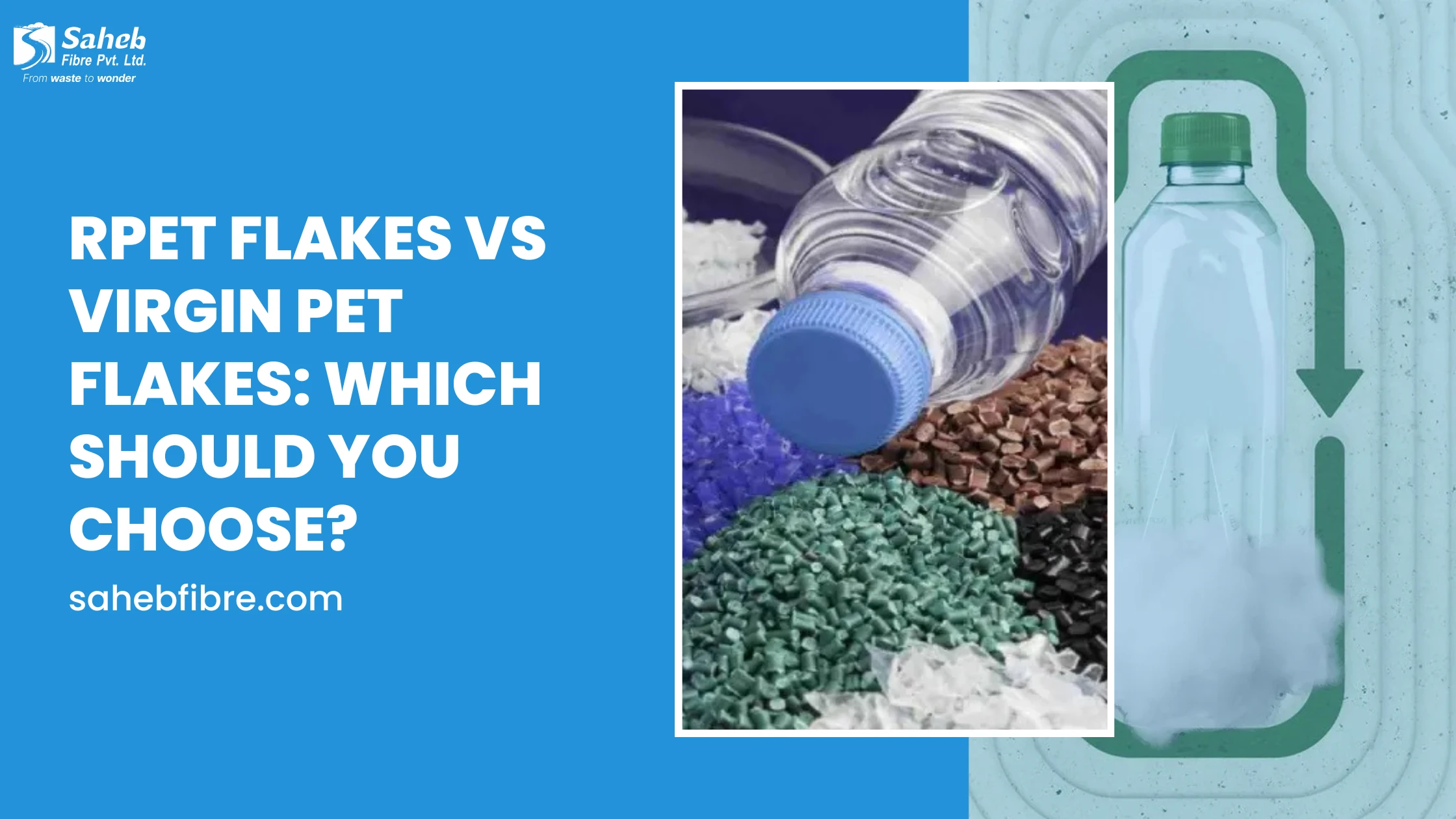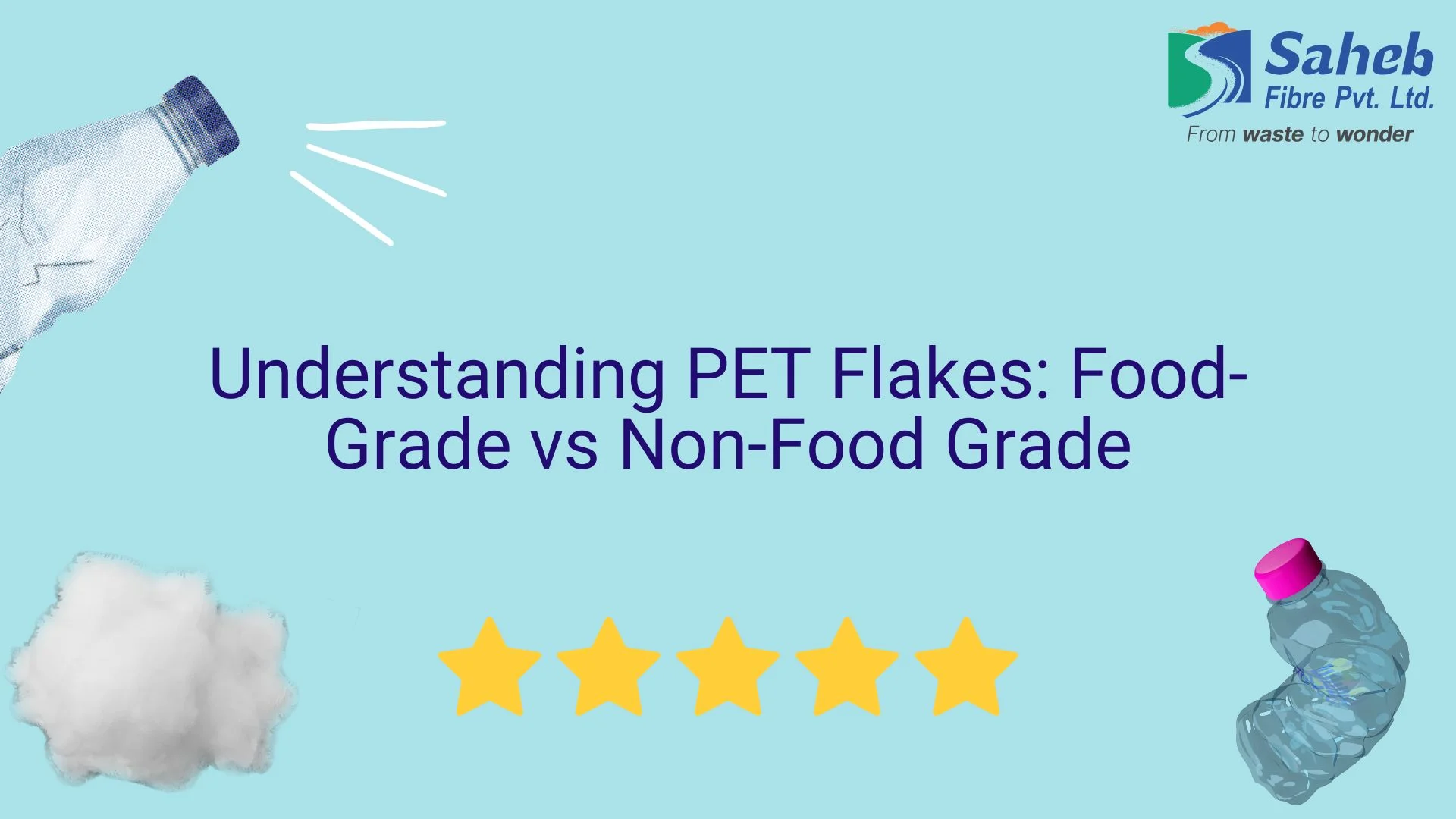
Polyethylene Terephthalate (PET) is one of the most widely used thermoplastic polymers, especially in the packaging, textile, and manufacturing industries. Due to the increasing degree of sustainability and recycling, PET flakes (dipped from post-consumer and post-industrial PET waste) have become very vital. However, not all PET flakes are created equal. There are two main types of PET flakes, food-grade and non-food-grade PET flakes.
For businesses that need high-quality recycled PET (rPET) materials for a variety of applications, it's important to know all the differences between the categories of PET.
What are PET Flakes?
Recycled PET flakes are small refined pieces of recycled plastic in the form of PET bottles, containers, or other PET-based materials. The flakes in turn are raw materials for creating new PET products avoiding the large dependency on virgin plastic, making our plastics a circular economy.

Recycling Process of PET Flakes
-
Collection - PET bottles and containers are gathered through municipal and industrial recycling programs.
-
Sorting - PET waste is sorted based on color, composition and type of material but all is done to ensure the purity of the sorted materials.
-
Cleaning & Washing - Labels, adhesives, and organic contaminated residues are removed in hot water chemical treatments.
-
Shredding - PET waste enters the shredded PET waste stage. The cleaned PET waste is shredded into uniform-sized flakes for further processing.
-
Purification & Processing - They are purified & processed – PET flakes go through advanced decontamination & filtration methods to generate the quality.
Food-Grade vs. Non-Food Grade PET Flakes
1. Food-Grade PET Flakes
Food-grade PET flakes are high-purity recycled PET materials that meet strict regulatory standards for direct food and beverage contact. The advanced decontamination processes on these flakes remove any impurities, odors, and other harmful contaminants. These flakes are being used by food safety authorities like the FDA (U.S. Food and Drug Administration), EFSA (European Food Safety Authority), and BIS (Bureau of Indian Standards) for their regulation and approval in packaging applications.
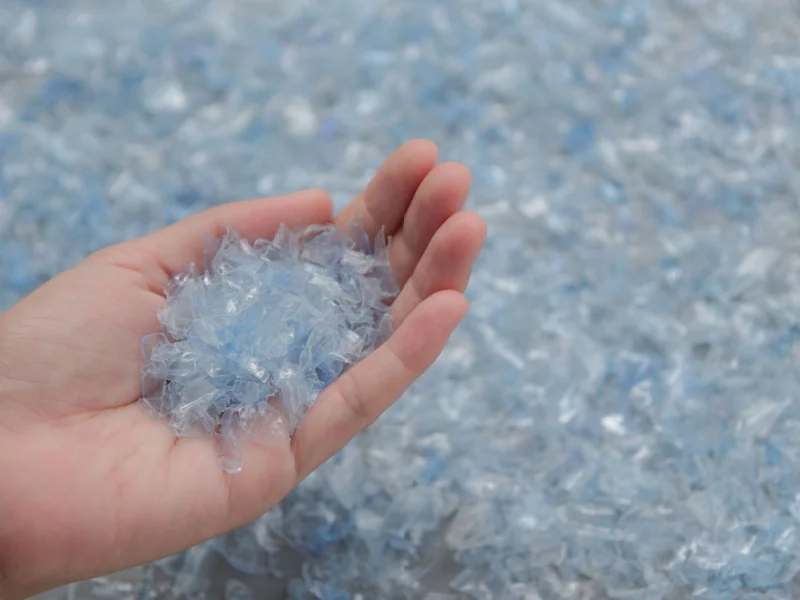
Characteristics of Food-Grade PET Flakes
-
Exceptional Purity – Free from contaminants like PVC, metal, and organic residues.
-
Regulatory Compliance – Approved by organizations like the U.S. FDA, EFSA, and BIS for food safety.
-
Intrinsic Viscosity (IV) Retention – Maintains the right IV levels to ensure durability and strength in end products.
Advanced Processing for Food-Grade PET Flakes
-
Hot Washing & Chemical Purification – Eliminates impurities and bacteria for safe usage.
-
Super-Clean Recycling Technologies – Removes unwanted residues while retaining polymer integrity.
-
Vacuum Decontamination & Extrusion – Ensures the final flakes meet food safety standards.
Key Applications of Food-Grade PET Flakes
-
Beverage bottles (water, juice, dairy, carbonated drinks)
-
Food containers (yogurt cups, ready-to-eat meal trays)
-
Pharmaceutical packaging (medicine bottles, blister packs)
2. Non-Food Grade PET Flakes
Non-food-grade PET flakes are used in industrial and commercial applications where food safety is not required. These are flakes from recycled PET waste with maybe some residual, industrial contaminants like labels and adhesives. While the foods cannot meet food grade standards, the foods are strong, durable and versatile for a number of different industries.
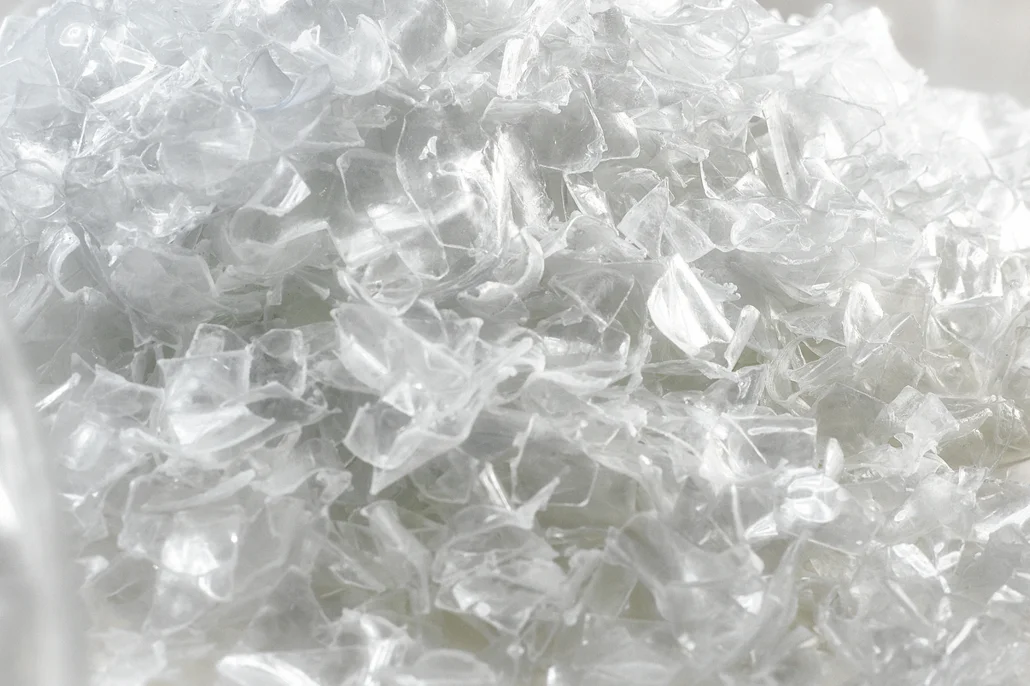
Nonfood grade PET flakes are widely processed into polyester fibers, nonfood packaging, industrial components, and other applications used in textiles, automotive, or construction. They are further converted to polyester yarns in textiles, used for carpets, upholstery, and clothing. Interior panels and insulation materials are used by the automotive sector.
This means that waste reduction and sustainability is also a key advantage for the repurposing of PET waste within a circular economy. Processing to exclude food saiue means that still high performance properties can be obtained in the form of tensile strength and thermal stability.
Characteristics of Non-Food Grade PET Flakes
-
Lower Purity – May contain traces of non-PET elements such as wrappers, adhesives, or PP (polypropylene).
-
No Direct Food Contact – Suitable for products that do not require FDA or EFSA approval.
-
Recycled from Mixed Sources – Often sourced from post-industrial PET waste and non-packaging PET materials.
Key Applications of Non-Food Grade PET Flakes
-
Polyester fiber production (used in clothing, carpets, and upholstery)
-
Strapping bands and ropes (for packaging and industrial use)
-
Automotive components (molded parts, dashboards, insulation)
-
Plastic lumber & construction materials (alternative to wood and concrete)
-
Non-edible product packaging (shampoo bottles, household cleaners, detergent containers)
Food-Grade vs. Non-Food-Grade PET Flakes
| Feature | Food-Grade PET Flakes | Non-Food-Grade PET Flakes |
| Purity | High, free from contaminants | May contain impurities |
| Source | Recycled food & drink bottles | Mixed PET waste (textiles, packaging, etc.) |
| Processing | Advanced cleaning & filtration | Basic cleaning & sorting |
| Regulations | FDA, EFSA approved for food use | No food safety approval |
| Appearance | Clear, minimal color variation | Dull, mixed colors |
| Uses | Food packaging, bottles | Textiles, carpets, auto parts |
| Safety | Safe for food contact | Not food-safe |
How to Identify Food-Grade and Non-Food-Grade rPET Flakes
To guarantee safety and compliance in various applications, it is crucial to identify food-grade and non food-grade flakes. The main difference is due to purity, levels of contamination, and standards of processing.
-
Purity and Contamination Levels – Food-grade flakes should have no trace of PVC, glue, metal and organic residue whereas that of Non Foods grade flakes have higher contamination levels from mixed-up plastic sources.
-
Source of Recycled PET – Food-grade flakes come from strictly controlled post-consumer PET bottles used for beverage and food packaging; non food grade flakes may include additional waste PET such as textiles and industrial plastics.
-
Processing and Certification – After it has undergone advanced decontamination processes like vacuum degassing, high-temperature washing, filtration, the food grade rPET has to be processed and certified each by PTA and DEHP Traces. At the same time, non food grade rPET does not need such stringent processing.
- Visual and Physical Characteristics – Food grade flakes are clearer with less discoloration, while non-food-grade flakes can be dull, mixed or contain even visible contaminants.
Saheb Fibre: Leading Manufacturer & Supplier of rPET Flakes
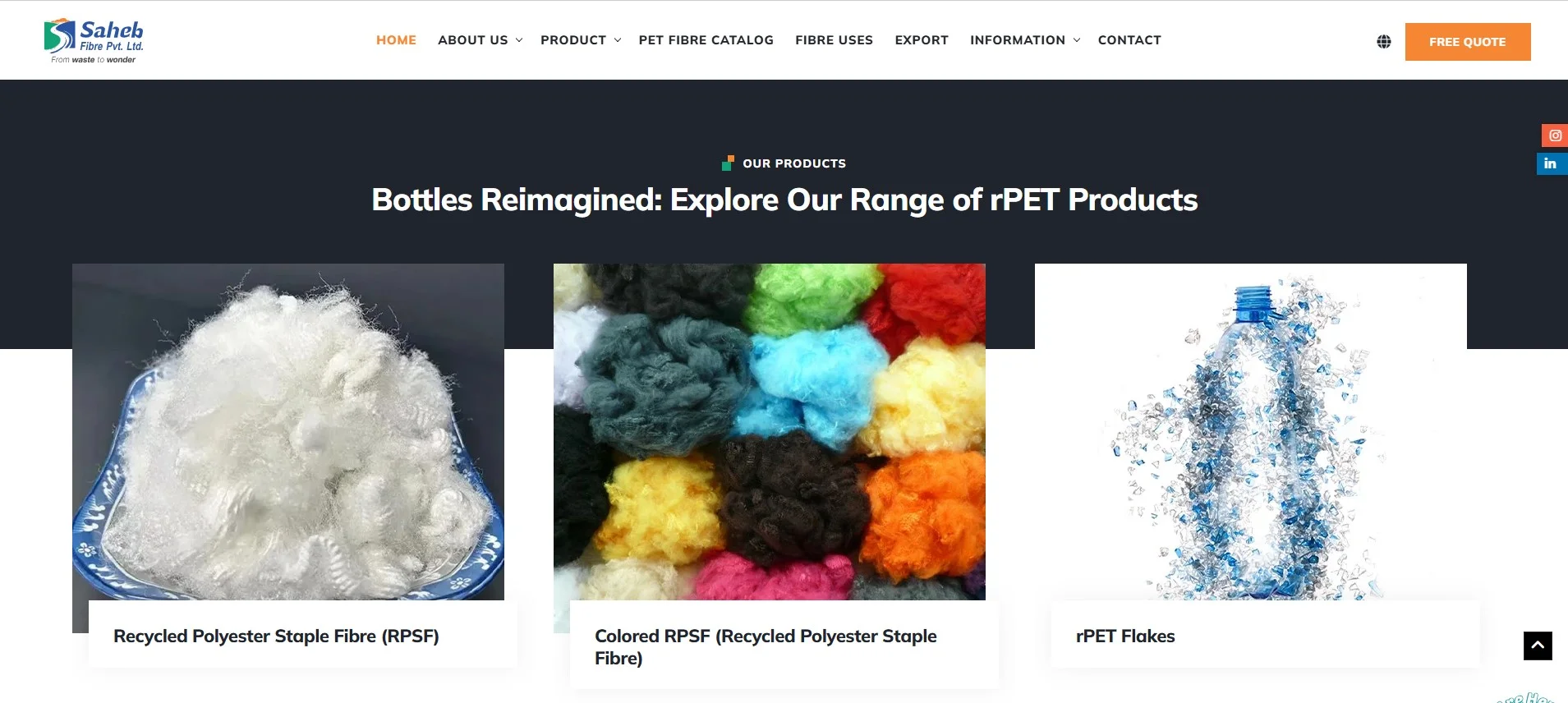
Saheb Fibre is a trusted manufacturer and supplier of different grades of rPET flakes, ensuring superior quality and compliance with global standards. We have innovative recycling and processing technologies that allow us to refine premium food and nonfood PET flakes for the packaging, textiles, automotive and construction industries. Pet flakes we process are of the strictest quality with all the requirements for various applications.
Acceptance Criteria for PET Flakes Quality Grades
The quality of PET flakes is determined based on factors like PVC content, organic impurities, moisture levels, and glue residues. The table below outlines the classification of PET flakes into A, B, C, D, and E grades:
| Ribbon Tagging | A Grade (Green) | B Grade (Yellow) | C Grade (Blue) | D Grade (Red) | E Grade (Black) |
| PVC Content (ppm) | ≤50 | ≤75 | ≤175 | ≤240 | >240 |
| Wrapper (ppm) | ≤20 | ≤30 | ≤70 | ≤96 | >96 |
| Metal (ppm) | ≤20 | ≤30 | ≤70 | ≤96 | >96 |
| PP Content (ppm) | ≤20 | ≤30 | ≤70 | ≤96 | >96 |
| Organic/Dirty PET (ppm) | ≤20 | ≤30 | ≤70 | ≤96 | >96 |
| PH Value | ≤7.0 | ≤7.0 | ≤7.0 | ≤7.0 | ≤7.0 |
| Moisture (%) | ≤0.70 | ≤0.70 | ≤0.70 | ≤0.70 | ≤0.70 |
| Glue Content (ppm) | ≤20 | Nil | Nil | Nil | Nil |
| Total Impurities (ppm) | ≤100 | ≤150 | ≤350 | ≤480 | >480 |
| Color (ppm) | ≤50 | ≤50 | ≤50 | ≤70 | >70 |
Why Choose Saheb Fibre for rPET Flakes?
At Saheb Fibre, we specialize in producing high-quality rPET flakes that meet international standards. Our key advantages include:
-
Such superior purity and quality as possible using state-of-the-art recycling technology.
-
Very strict quality controls on food-grade and industrial-grade PET flakes.
-
Global supply capabilities in packaging, textiles, and automotive industries.
-
Represents a commitment to sustainability, plastic waste reduction, and [a] circular economy.
Final Thoughts
However, to select the best materials for your industry, it is important to understand the distinguishing points between food grade and non food grade rPET flakes. Saheb Fibre is well versed in PET bottle recycling and with that know how businesses can access quality for recycled PET flakes that perform to the best of their ability, comply and are sustainable.
Looking for premium PET flakes? Talk to Saheb Fibre today so that we can create exactly the solution you need!
